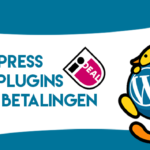Are you managing multiple websites and tired of hopping between WordPress dashboards? Good news—WordPress Multisite Setup is the feature you’ve been waiting for. With just one WordPress installation, you can run an entire network of sites, whether you’re managing an agency portfolio, an educational platform, or a niche blogging empire.
Interested in setting up your own WordPress Multisite Network? Contact Opitecmedia today and let our experts take care of the technical setup, optimization, and long-term management—so you can focus on growing your business.
This in-depth guide will walk you through every essential step and insider tip to master WordPress Multisite Setup. We’ll also explore the pros, common pitfalls, SEO strategies, and advanced management tools you’ll want to keep in your toolkit.
What is WordPress Multisite setup?
WordPress Multisite Setup is a built-in feature that enables you to manage multiple websites from a single dashboard. Instead of installing WordPress separately for each project, Multisite Setup allows you to streamline updates, share users, and control plugins and themes across your network.
Think of it as a centralized command center for your entire web empire.

Why Choose WordPress Multisite setup?
Understanding WordPress Multisite Setup can transform your website management experience, making it more efficient and scalable.
Before we dive into the “how,” here’s why you might want to use WordPress Multisite:
- Centralized Management: Control updates, user roles, and plugin installations from one place.
- Consistent Branding: Deploy the same themes and settings across multiple sites.
- Scalability: Launch and manage new sites effortlessly as your business or content network grows.
- Efficiency: Share plugins and themes to reduce overhead and server load.
- User Control: Assign roles to site admins without giving them access to the full network.
1. Check Hosting Requirements
WordPress Multisite is more demanding than a standard install. Ensure your hosting environment meets these minimum requirements:
- VPS, Cloud, or Dedicated Hosting (avoid shared hosting for Multisite)
- PHP 7.4 or higher and MySQL 5.7+
- SSL certificate (required for subdomain networks)
- Access to wp-config.php and .htaccess files
Want a breakdown of different hosting providers? This Hosting Comparison Guide by Kinsta gives a neutral overview of performance-focused hosts that are Multisite-compatible.
2. Enable Multisite in WordPress
Multisite is disabled by default. Here’s how to activate it:
- Open wp-config.php.
- Add the following line above /* That’s all, stop editing! Happy publishing. */:
php
define(‘WP_ALLOW_MULTISITE’, true);
- Save the file and refresh your dashboard. You’ll now see a new option under Tools > Network Setup.
3. Choose Between Subdomains vs Subdirectories
You’ll be prompted to select a URL structure:
- Subdomains: site1.yourdomain.com
- Subdirectories: yourdomain.com/site1
Note: Subdomains require wildcard DNS configuration. Check your hosting panel to enable this.

4. Set Up the Network
Once you’ve chosen a URL structure:
- Deactivate all active plugins.
- Go to Tools > Network Setup.
- Follow the instructions to add new code to both your wp-config.php and .htaccess files.
- Log in again—your Multisite Network is now active!
5. Access the Network Admin Dashboard
You now have two dashboards:
- The main site dashboard
- The Network Admin Dashboard
From the top-left corner, switch to My Sites > Network Admin. From here you can:
- Add new sites
- Install themes and plugins for network-wide use
- Manage global user roles
6. Add Sites to Your Network
To add a new site:
- Go to Sites > Add New.
- Enter the site address, title, and admin email.
- Click Add Site.
Each site operates independently but draws from the shared WordPress core.
7. Manage Themes and Plugins
- Install themes/plugins from the Network Admin.
- Activate them network-wide or allow site-specific activation.
- Use Multisite-compatible tools—some plugins are only partially compatible with Multisite (check documentation first!).
Recommended Plugins:
- UpdraftPlus (Backup)
- Wordfence (Security)
- Rank Math (SEO)
- WP Rocket (Caching)
8. Security Best Practices for Multisite
A compromised site can affect your entire network. Here are some must-dos:
- Use strong passwords and enable two-factor authentication
- Restrict user roles with care
- Install a firewall plugin like Wordfence
- Perform daily backups with cloud storage options
- Keep WordPress core and plugins updated
9. Optimize Performance Across All Sites
Multisite performance can degrade without optimization:
- Use a Content Delivery Network (CDN) like Cloudflare
- Leverage caching via plugins like W3 Total Cache
- Disable unnecessary plugins at the individual site level
- Optimize images using plugins like ShortPixel or Smush
Real-World Use Cases for WordPress Multisite setup
1. Digital Agencies
Agencies often manage websites for multiple clients. With Multisite, each client site can be added as a new sub-site, sharing the same infrastructure but with independent branding and content.
2. Educational Institutions
Universities and colleges use Multisite to give each department or faculty their own site. Central IT manages security while professors handle content.
3. Franchises or Chain Businesses
Create individual sites for each location while maintaining brand consistency and central control.
4. News and Media Networks
Segment content by region, language, or category with centralized editorial control.
5. SaaS Platforms and Membership Sites
Use plugins like WP Ultimo to sell website creation services using WordPress Multisite setup.
Subdomains vs Subdirectories: Which Is Better?
| Feature | Subdomains | Subdirectories |
| SEO Impact | Treated as separate sites | Shares domain authority |
| Setup Complexity | Requires wildcard DNS | Easier setup |
| Best Use Case | Different brands or audiences | Unified brand or internal network |
| Google Verification | Separate Search Console profiles | Single property |
Tip: Choose subdirectories for better SEO and easier maintenance unless you need brand separation.
Advanced SEO Strategies for Multisite Networks
1. Structured Data
Use schema markup to enhance visibility in search results. Plugins like Rank Math can automate it per site.
2. Optimize Core Web Vitals
Page speed and mobile experience matter. Run audits with Lighthouse or GTmetrix.
3. Canonical Tags
Prevent duplicate content issues across sub-sites with proper canonicalization.
4. Multilingual Optimization
Use WPML or MultilingualPress for language-specific sub-sites with hreflang tags.
5. Smart Internal Linking
Link between sub-sites where relevant to build authority and improve UX.
Mini Case Study: University Department Sites
Client: Mid-sized European university
Challenge: Dozens of departments needed unique content control without compromising IT security or performance.
Solution: Opitecmedia deployed a Multisite network using subdirectories. Each department had its own admin panel but shared global themes, plugins, and security protocols.
Results:
- Cut infrastructure costs by 40%
- Unified branding across 30+ departments
- Streamlined updates and maintenance
- Boosted content production and search visibility
Is WordPress Multisite setup Right for You?
Perfect for:
- Digital agencies
- Universities or schools
- Franchise businesses
- Media companies
- SaaS platforms
- Internal enterprise sites
Final Thoughts
Setting up a WordPress Multisite Network is one of the smartest moves you can make if you’re managing more than one site. It centralizes your control, simplifies maintenance, and scales effortlessly as your needs grow.
Need expert help setting up your network or optimizing your existing Multisite install?
Reach out to Opitecmedia and let us handle it for you—secure, fast, and optimized from day one.
FAQs
Q: Can I remove Multisite later?
Yes, but it requires site-by-site migration to separate WordPress installs.
Q: Can each site have a different theme?
Absolutely! Install multiple themes and let site admins choose what fits.
Q: Does Multisite impact speed?
Not if optimized correctly—use caching, CDN, and solid hosting.




